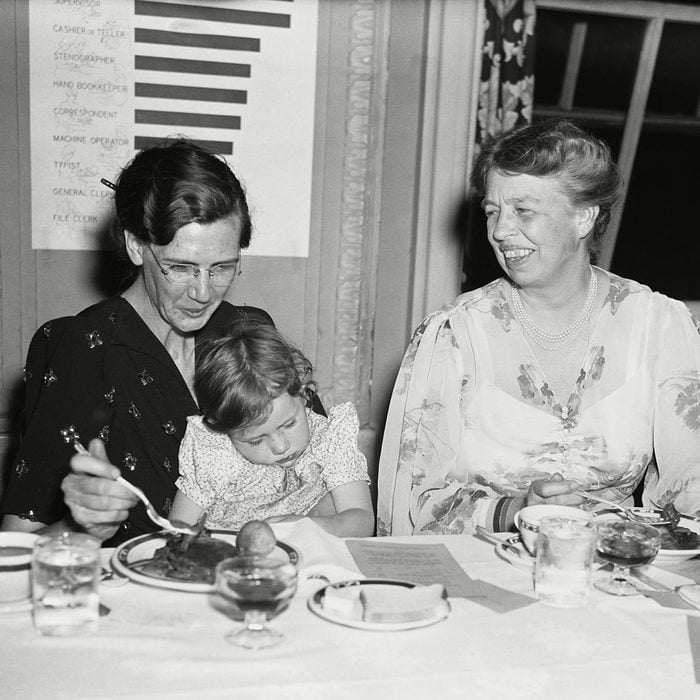
As First Lady, Eleanor Roosevelt was a model citizen, dispensing pearls of wisdom (“No one can make you feel inferior without your consent”) and leading by example. With the country suffering through the Great Depression, and then enduring the shortages of war, Roosevelt insisted on running the White House with the same economy that her fellow Americans faced. (Another pearl: “It is not fair to ask of others what you are unwilling to do yourself.”)
The result? Belt-tightening at the White House, including the kitchens. The low-budget meals—served to the president and visiting dignitaries alike—became notorious. Here’s a small sampling of the sorts of meals served, from mutton to…well, you’ll see.
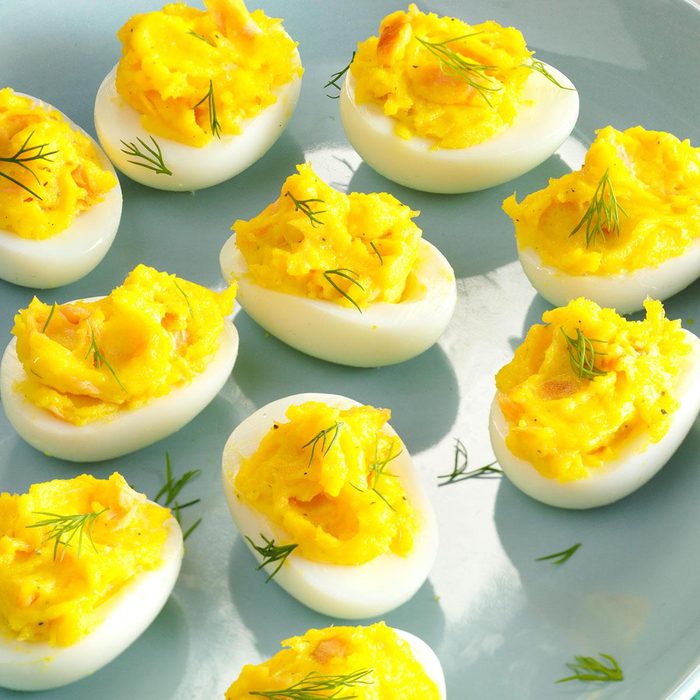
Eggs and Mashed Potatoes
From an upper-class family herself, Eleanor couldn’t cook. When she entered the White House, she enlisted the help of home economists to plan menus both cheap and nutritious. Not surprisingly, eggs were a top protein source: cheap, plentiful, nutritious. For one meal, she paired deviled eggs with tomato sauce, mashed potatoes, wheat bread and coffee. (This meal was one of her “seven and a half cent” menus: two courses with decent nutritional value that cost less than a dime per person.)
Our rating: This doesn’t sound so bad. Mashed potatoes are a classic comfort food, and the tomato sauce would cut through the heaviness of the egg-and-potato combo.
Try an updated version at home: Deviled eggs.
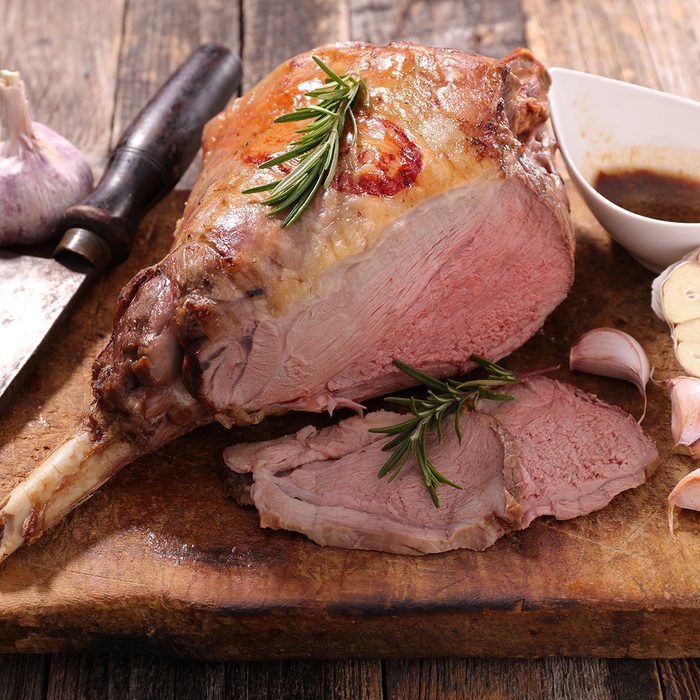
Cold Mutton
“Much has been said about the bad food at the Roosevelt White House, and all of it is true,” wrote Lillian Rogers Parks, who served as a White House maid for decades. Turns out, the cheapness of the food was only part of the problem. The other part was the cooking. Food was routinely “overcooked or undercooked or ruined one way or another.” Oh, dear.
For example, Senator Hiram Johnson remembered being served, “a very indifferent chowder first, then some mutton served in slices already cut and which had become almost cold, with peas that were none too palatable, a salad of little substance and worse dressing, lemon pie, and coffee.”
Our rating: Well….at least there was coffee?
Try an updated version at home: Make lamb the centerpiece of a meal, and finish with a not-at-all indifferent lemon pie.
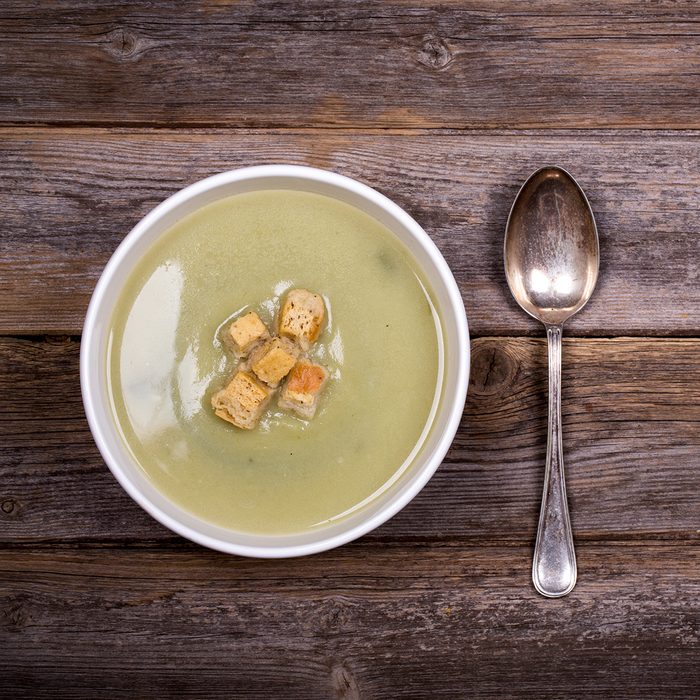
The Hemingway Trick
After dining at the White House in 1937, Earnest Hemingway wrote in a letter: “We had a rainwater soup followed by rubber squab, a nice wilted salad and a cake some admirer had sent in. An enthusiastic but unskilled admirer.” He learned to take up the habit of another frequent White House diner, who ate three sandwiches at the airport before heading to dinner with the Roosevelts.
Our rating: “Rainwater soup” has a poetic ring to it, but we admit that this entire menu sounds unpleasant.
Try an updated version at home: Chicken soup paired with a green salad. Chocolate cake for dessert. No airport food pre-gaming necessary.
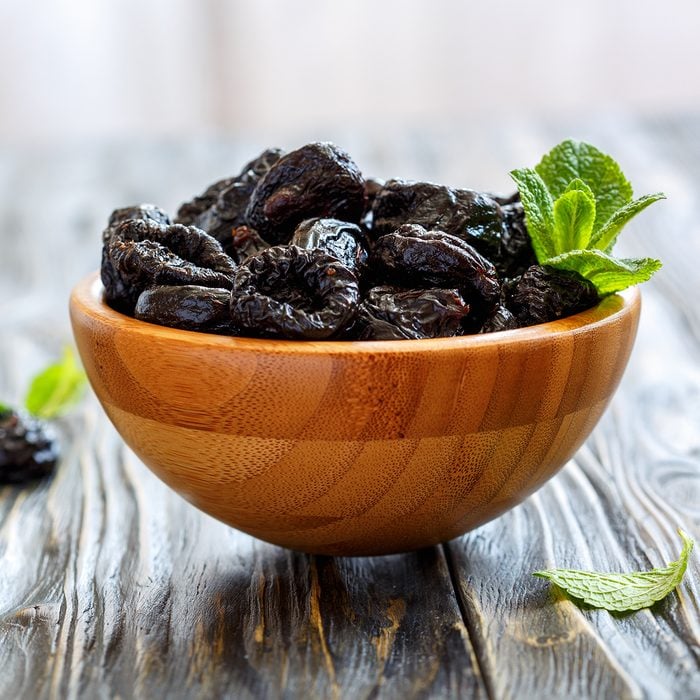
Prunes
All kinds of food was scarce in the ’30s and ’40s, including fresh fruits. They would have been very expensive, especially out of season. Dried fruit was a good substitute—affordable, resistant to spoilage and a good source of fiber. Prunes appeared regularly in the White House, especially on the dessert menu.
Our rating: Prunes have a bad rep, so try thinking of them as “dried plums.” That sounds a little tastier…right?
Try an updated version at home: Our writer tried this vintage prune cake—and loved it.
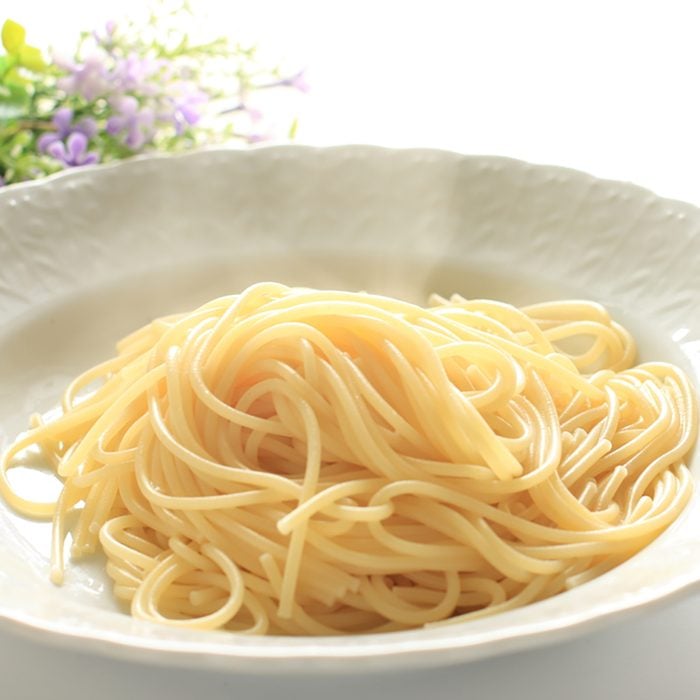
Spaghetti with Boiled Carrots
Nothing says home economy like cooking your whole dinner in one pot of water. Boiled carrots and spaghetti certainly saved on fuel. The Roosevelt’s cook often served noodles with little scraps of meat, chicken or veggies.
Our rating: Topping noodles with carrots sounds, on the whole, a bit dry. Toddlers, who love bland food, might really dig this one, though.
Try an updated version at home: This recipe for pasta with fresh vegetables is a template for using anything languishing in your crisper drawer.
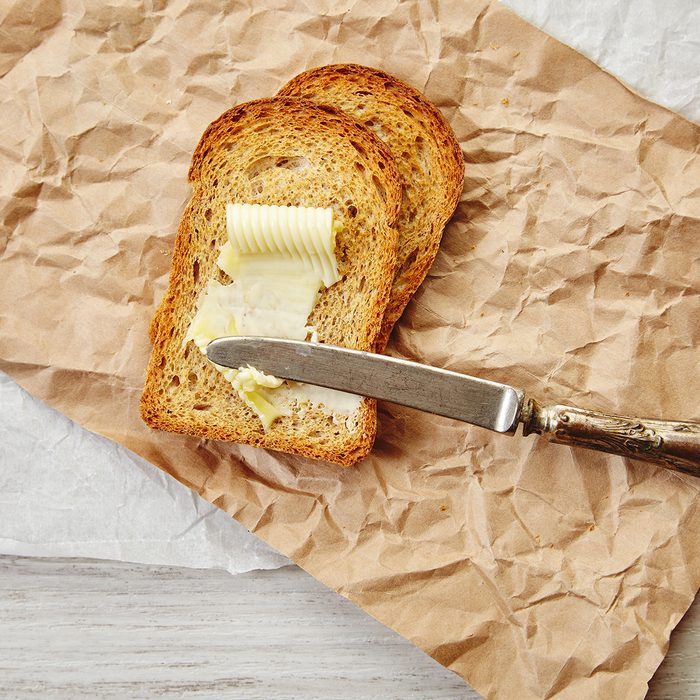
Bread and Butter Sandwiches
A common lunch at the White House might include buillion served alongside a bread-and-butter “sandwich.” Nourishing and wholesome enough, if a little light on protein. (Hopefully FDR didn’t have to make too many tough calls while hangry.)
Our rating: This sounds cozy but not particularly filling—it’s remniscient of something to eat when you’re sick.
Try an updated version at home: A slice of bread thickly slathered with the best grocery store butter is hard to beat. (We’d add a bit of cheese.) Bonus points if the bread is homemade.
These vintage recipes celebrate the deliciousness of butter.
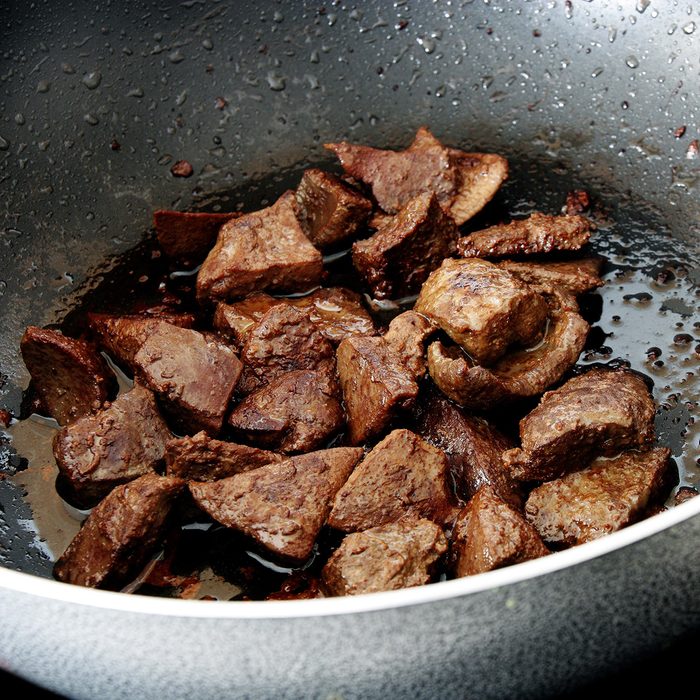
Sweetbreads and Other Organs
“I have been getting sweetbreads about six times a week,” President Roosevelt complained in a note to his wife. Instead of handing over the kitchen duties to her husband, Eleanor calmly showed off all the ways sweetbreads could be prepared: broiled, braised, creamed, on toast…
Organ meats are cheap and nutrient-rich, so it’s no wonder that kidneys, liver and brains also appeared regularly on the White House table.
Our rating: Alas, the name “sweetbread” sounds more appealing than the reality.
Try an updated version at home: This skillet dinner has converted many a liver-doubter.
Try these thrifty Depression-era recipes worth eating today.
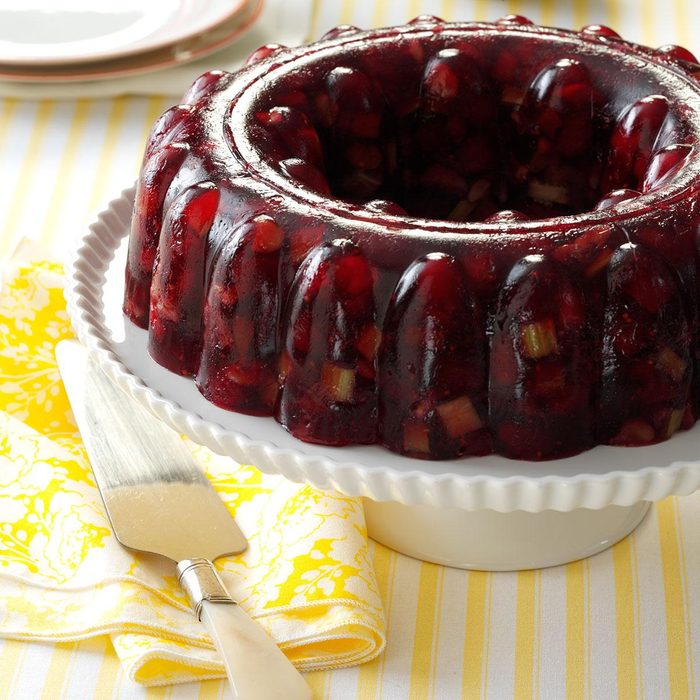
Gelatin Salads
Nobody would call Jell-o “salad” these days, but back in the ’30s and ’40s, it wasn’t unusual for salad to come in the form of a wobbling mound studded with mysterious veggies and fruits. No surprise, then, that gelatin salads were a staple on the White House table.
Our rating: Scratching our heads about how an elaborate molded salad is cheaper than a few lettuce leaves—but we won’t press the issue.
Try an updated version at home: These retro-inspired jello salads showcase stunning color and modern flavor.
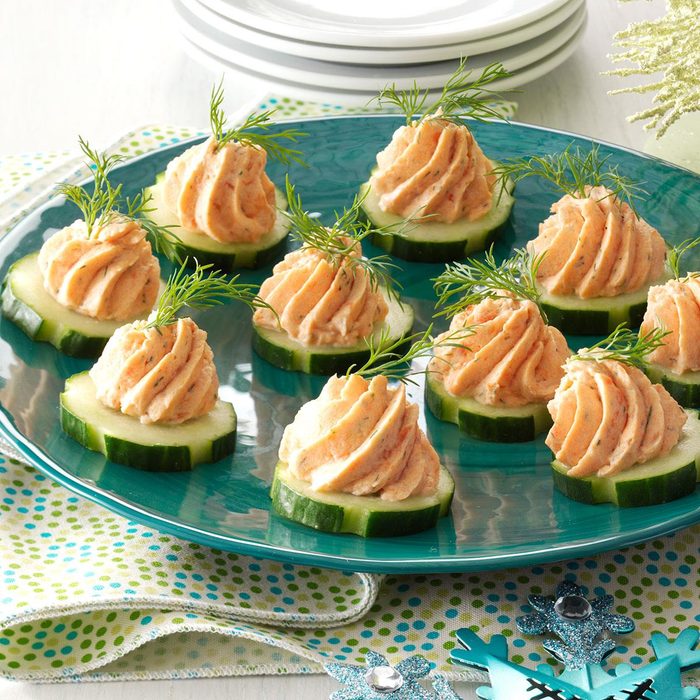
“Creative” Sides
Like the gelatin salad, odd preparations of fruit and vegetables weren’t uncommon in this era—but they certainly sound strange. Think of the “Bobotee salad,” a mix of cold rice, bananas, chicory, curry powder and almonds tossed together in French dressing and Worcestershire sauce. Or the pineapple slices rolled in peppermint candy, served as an appetizer. Or the pear salad, with cream cheese, chives and lettuce.
Our rating: As a child, I enjoyed making “potions” from the odds and ends in the pantry. I would have fit right in at this White House!
Try more classic 1930s recipes—from sophisticated and splashy to affordable for everyday.
